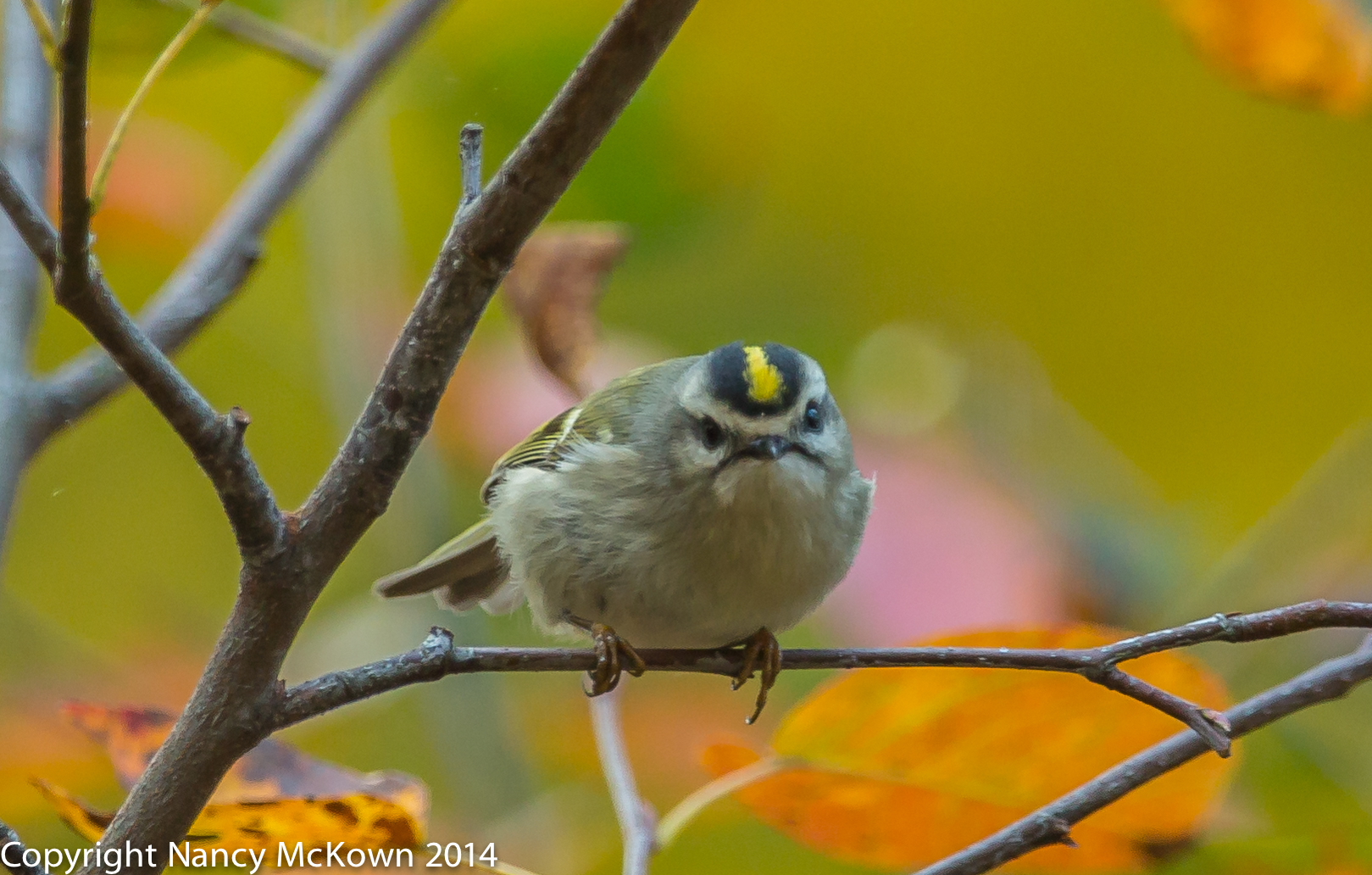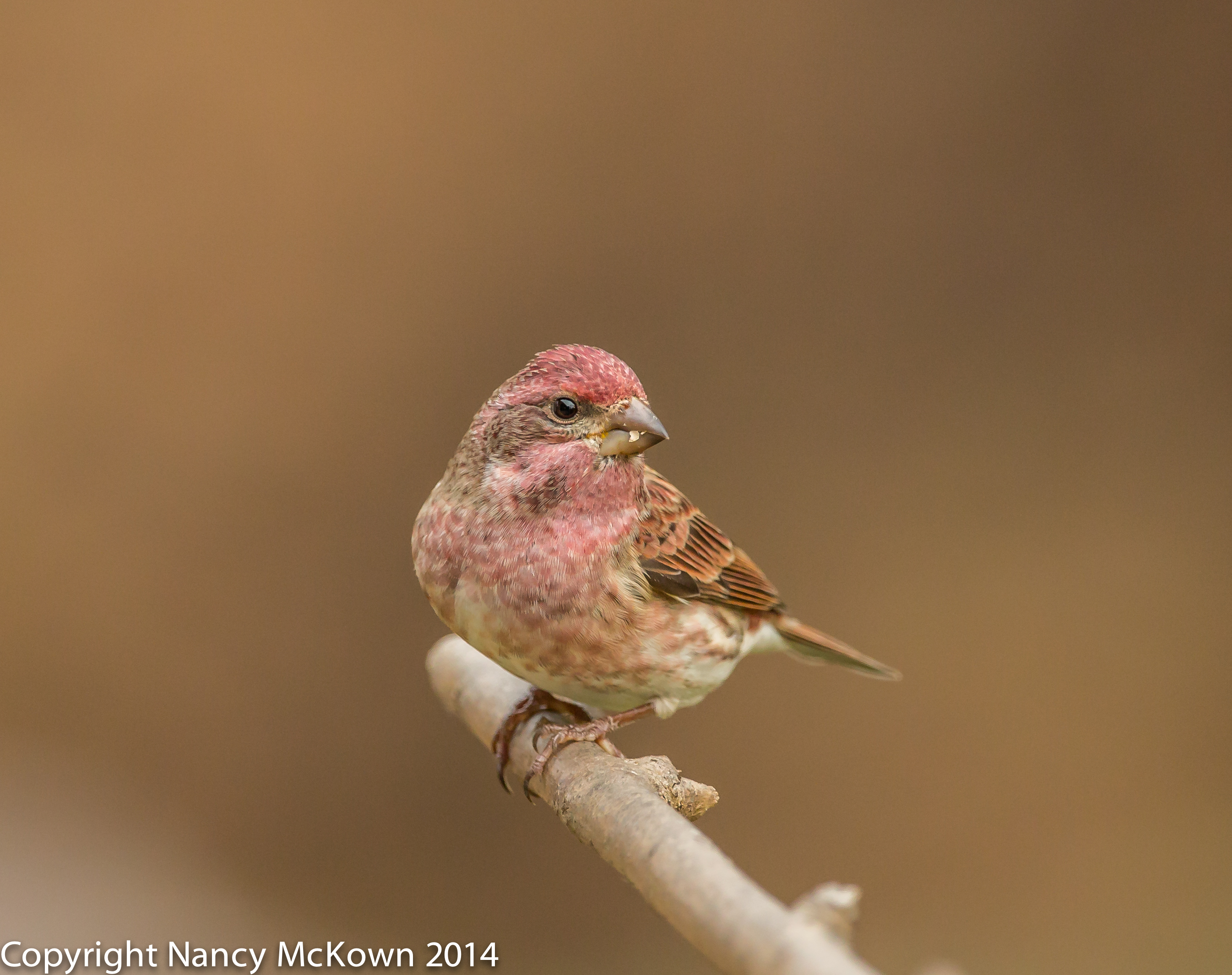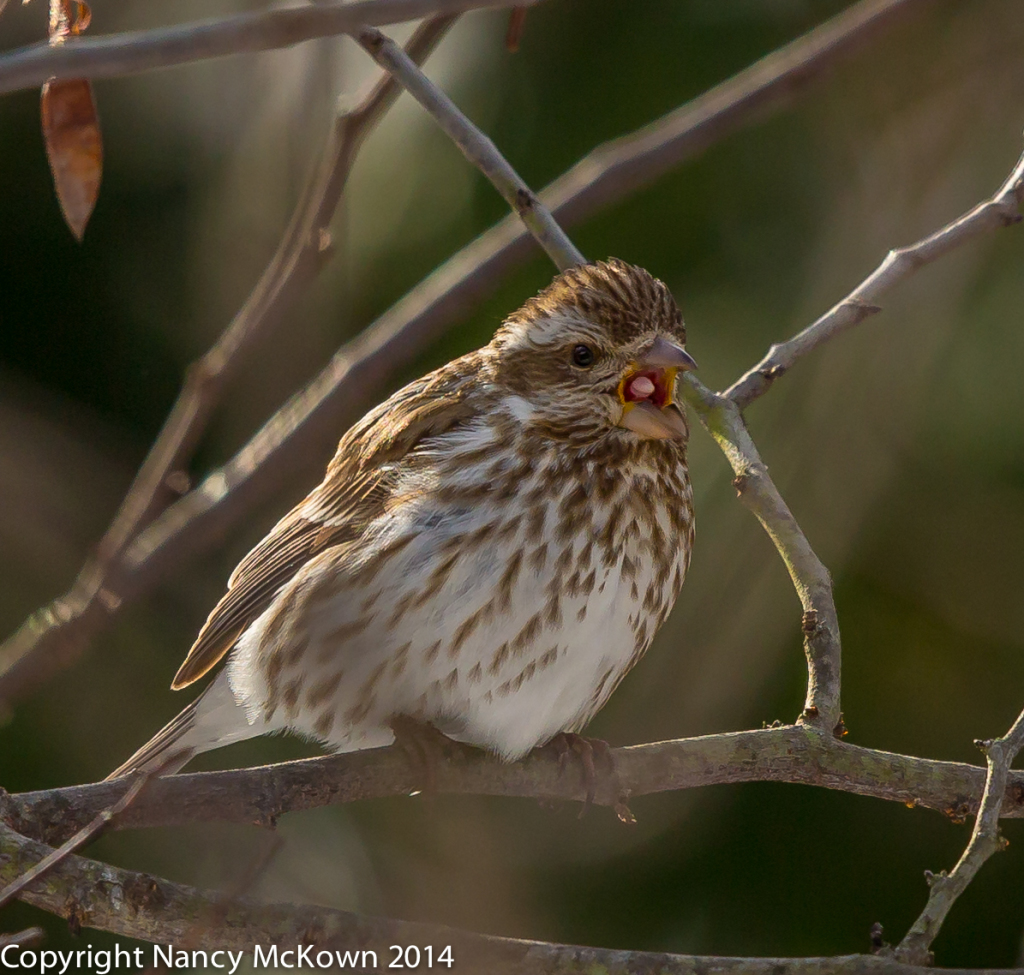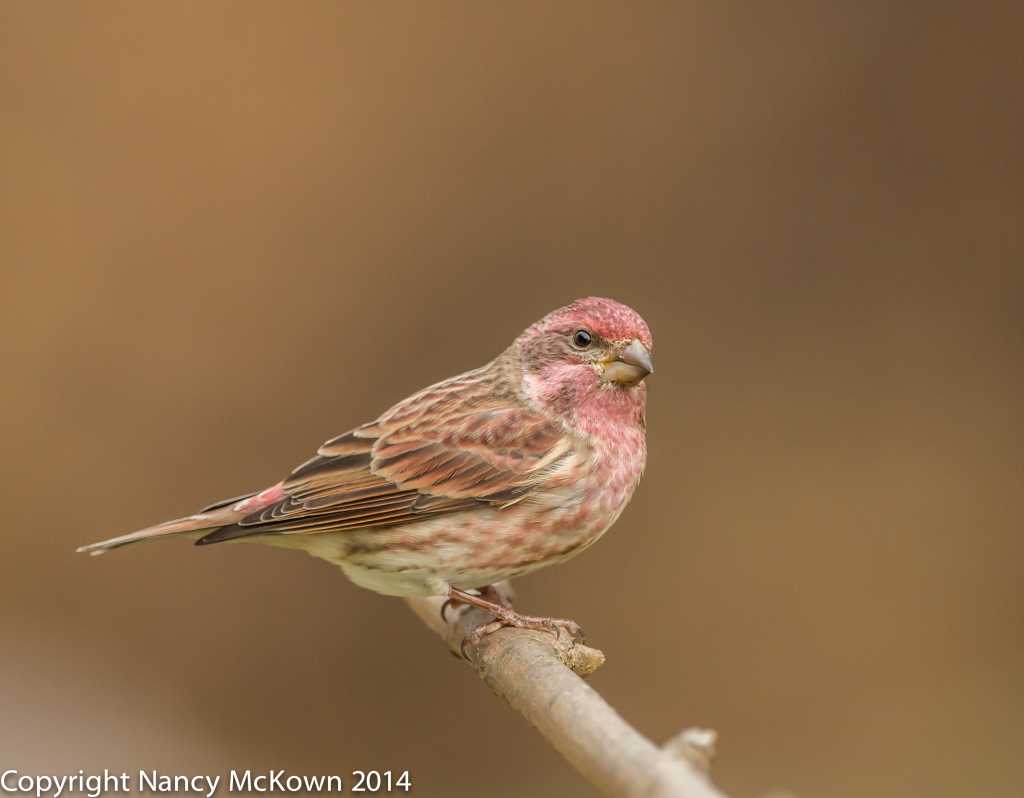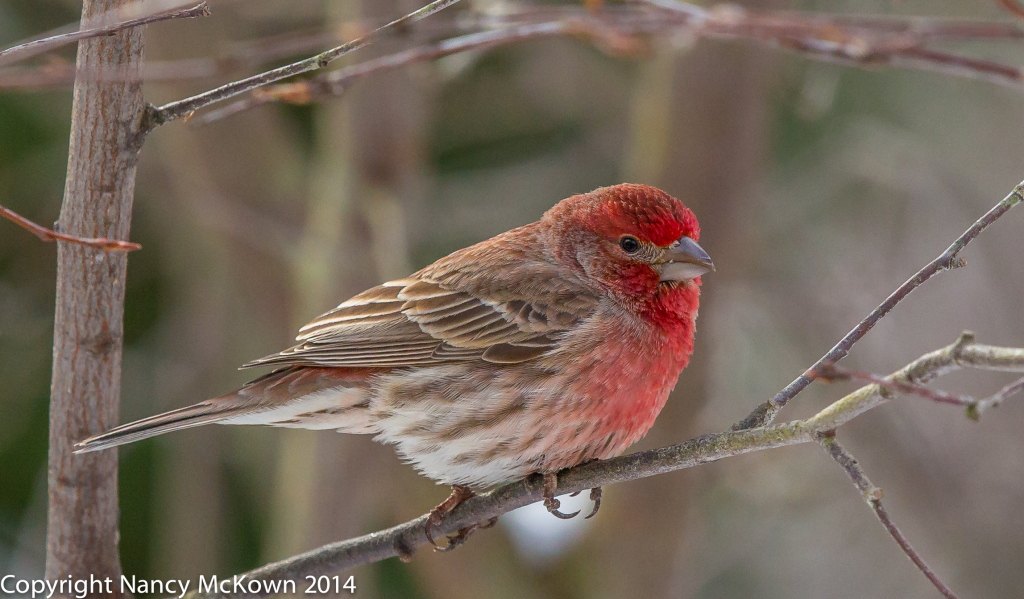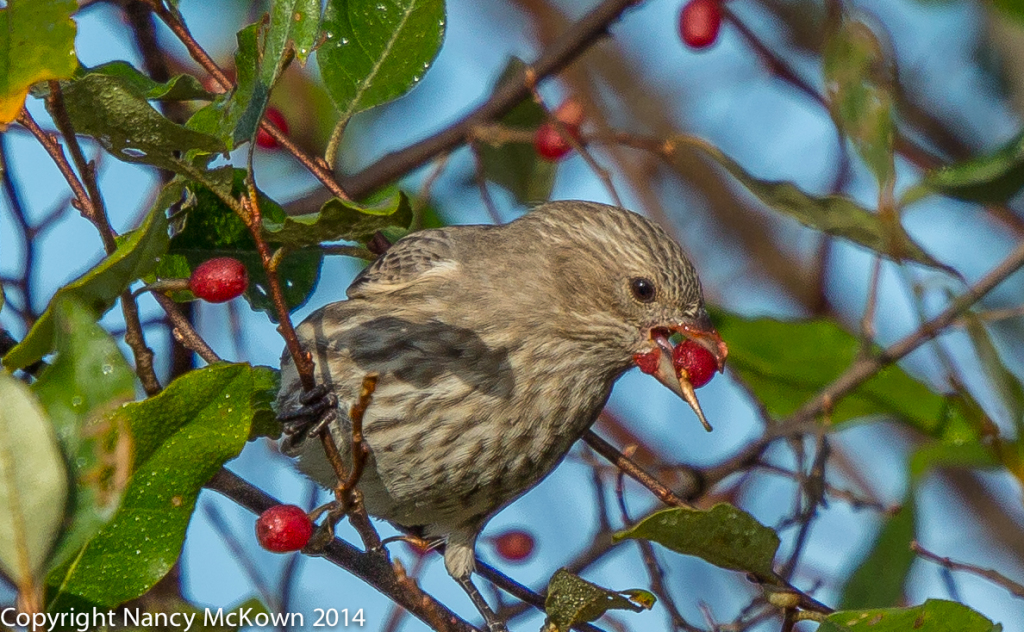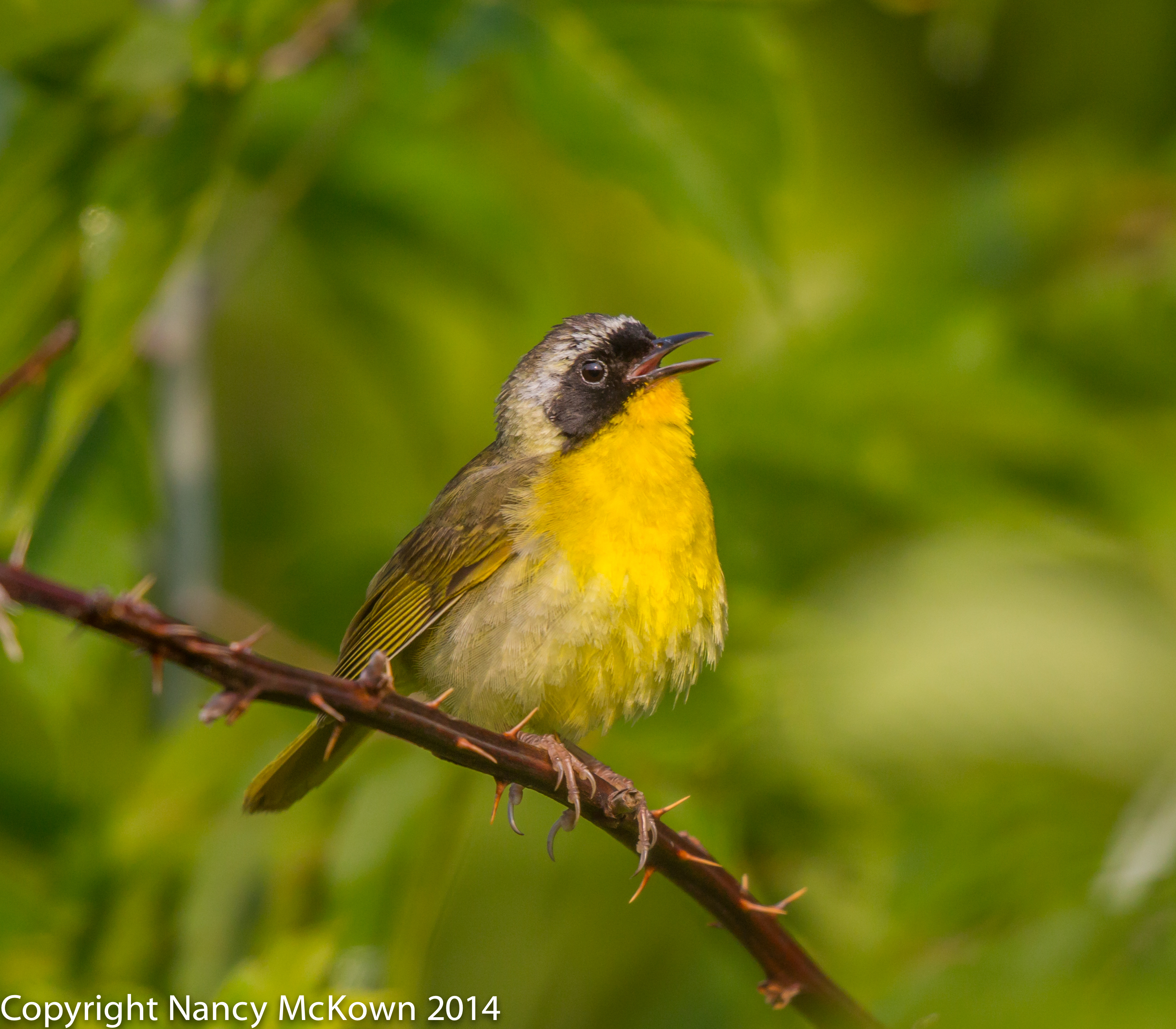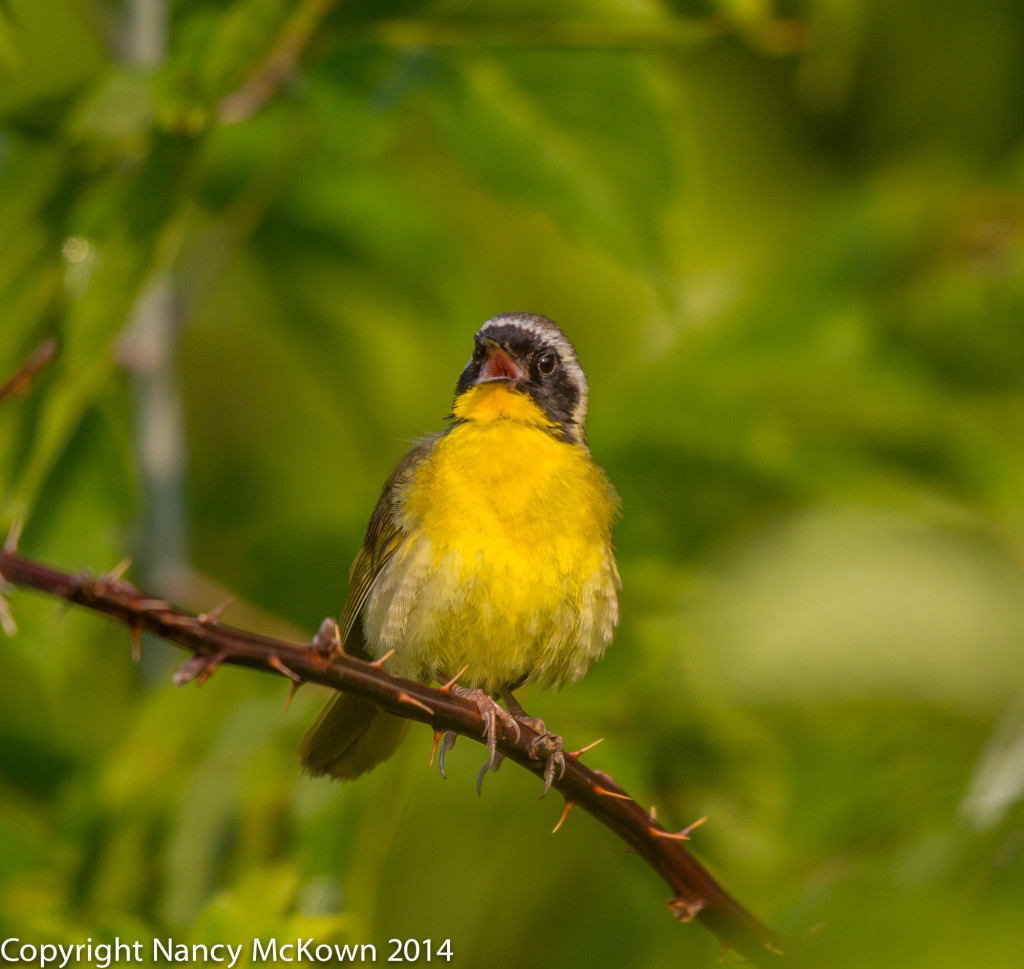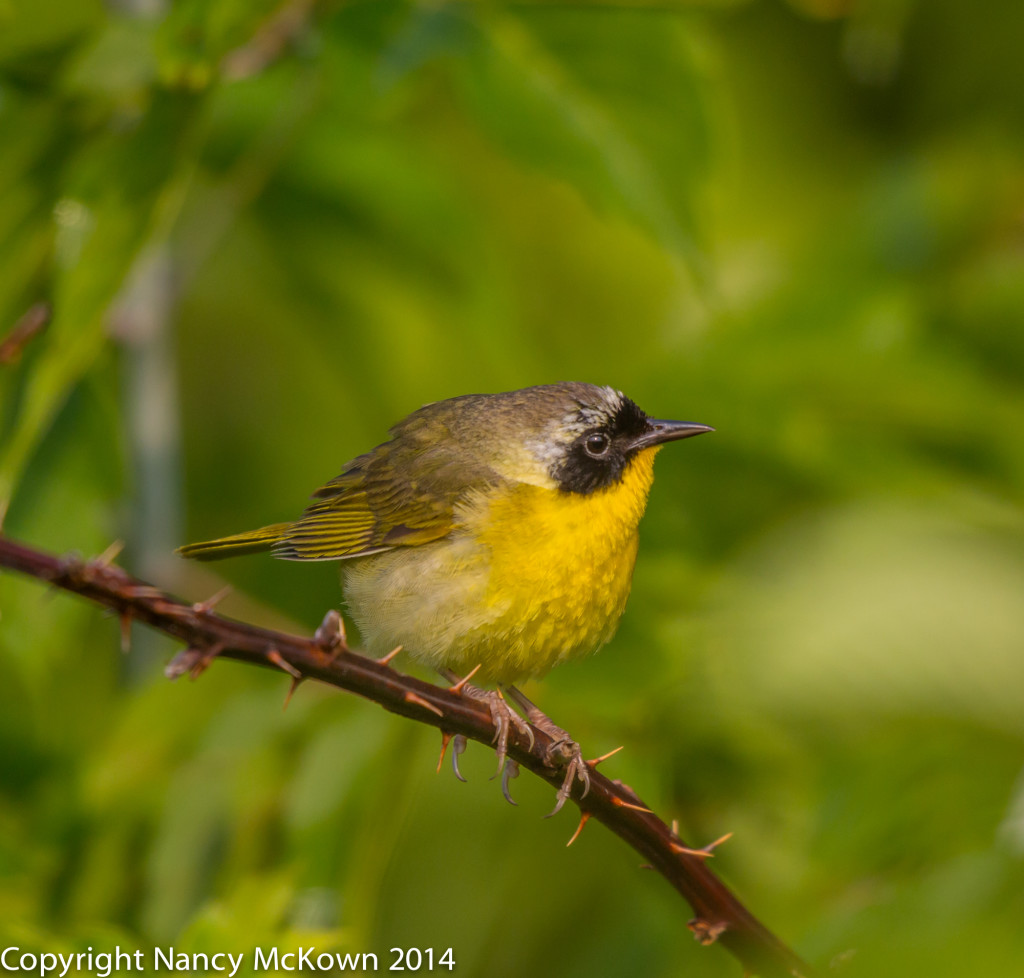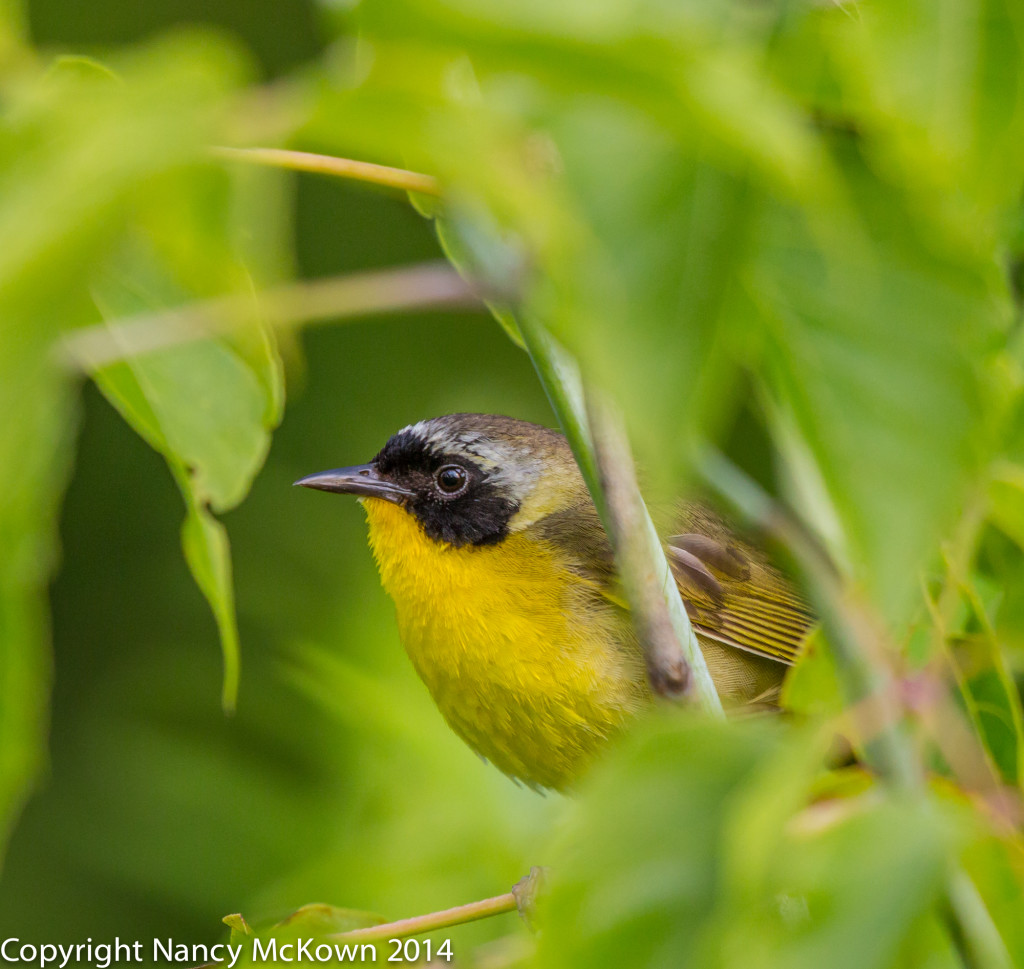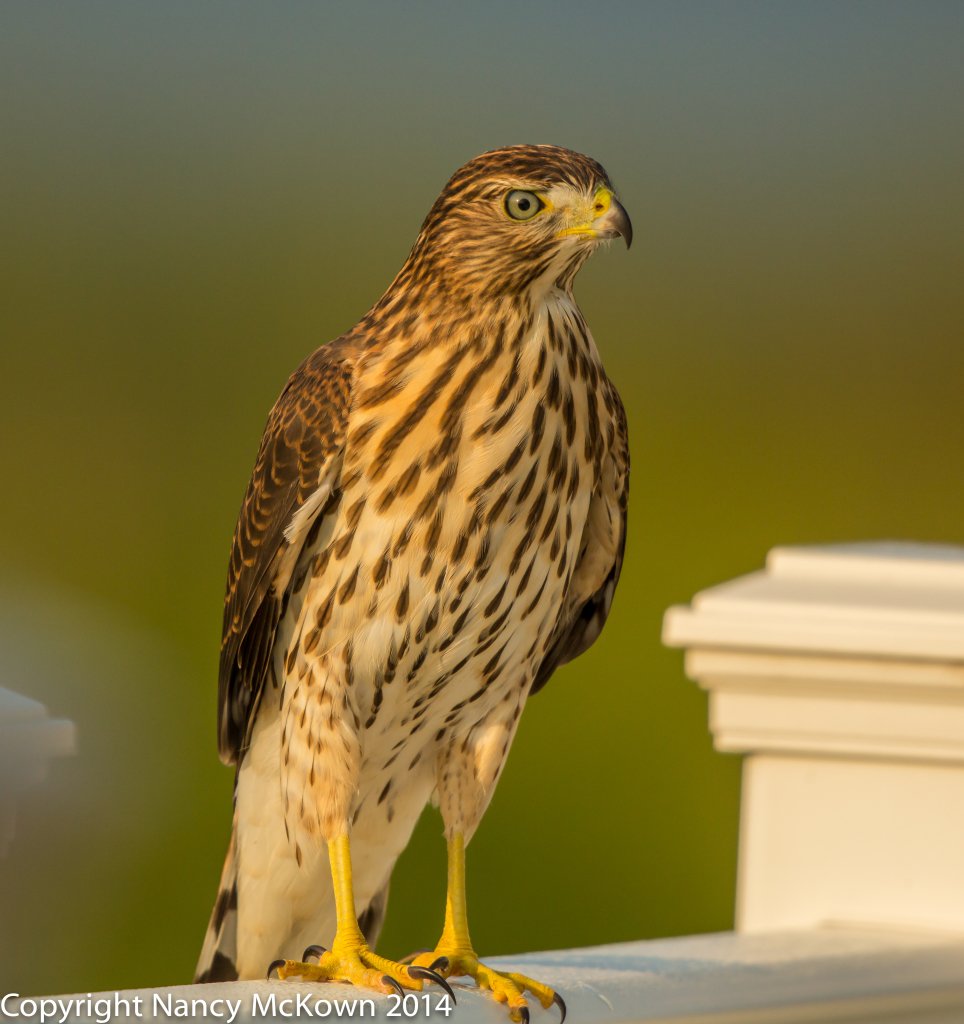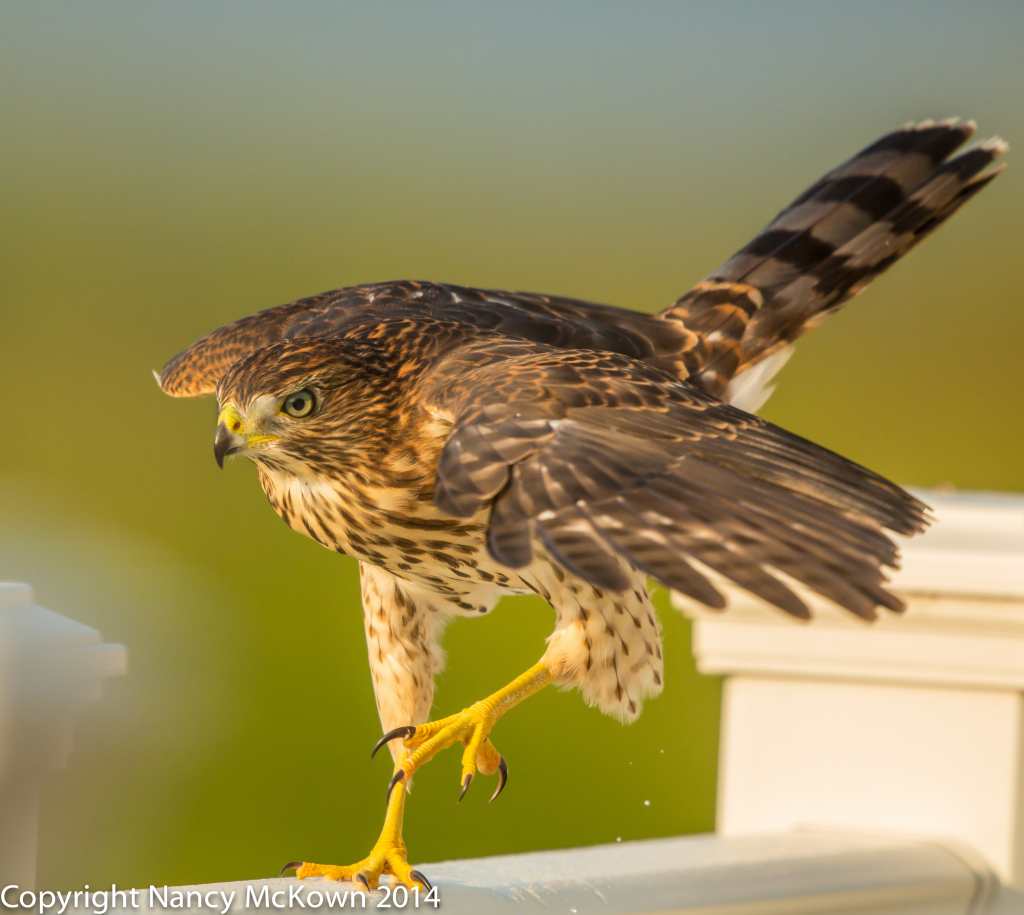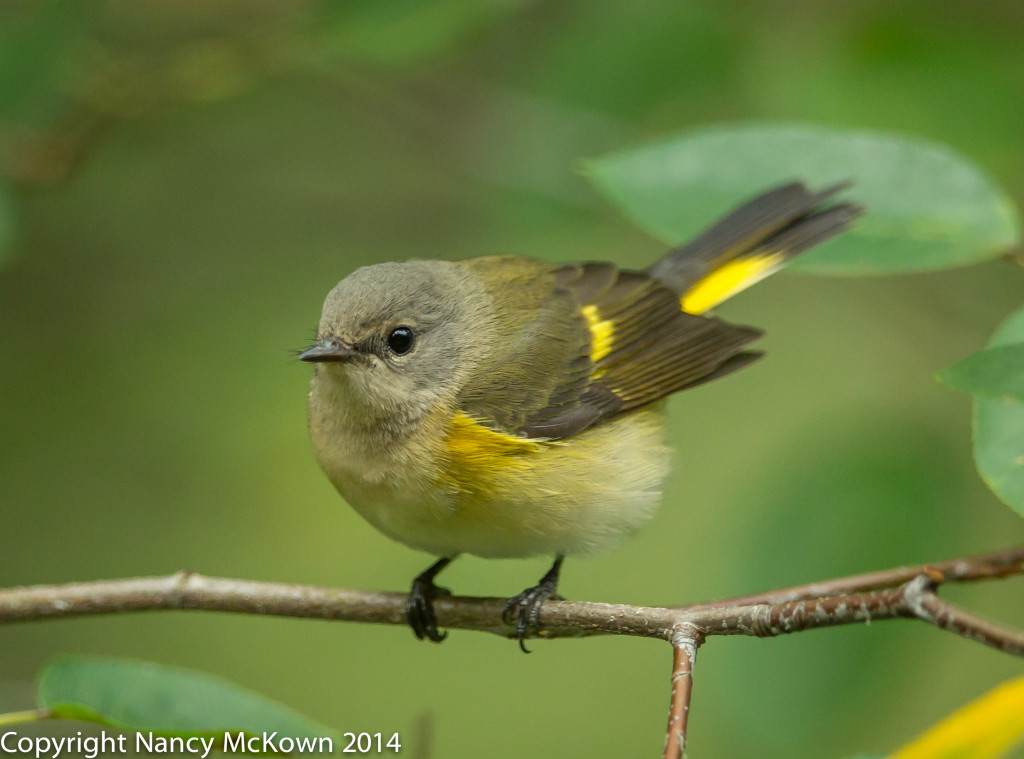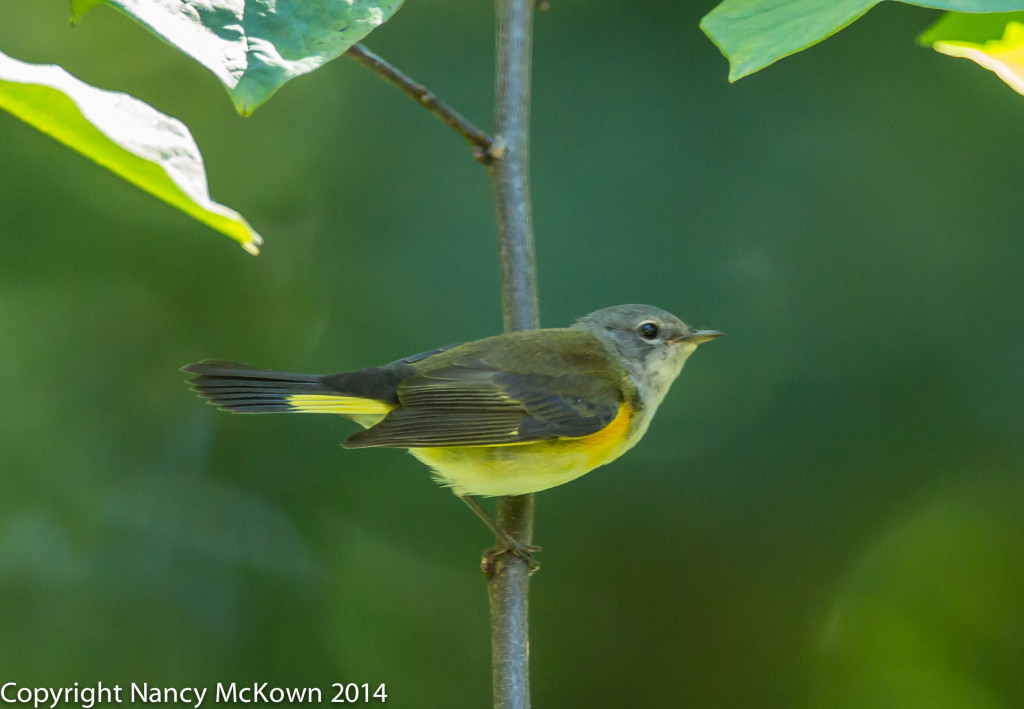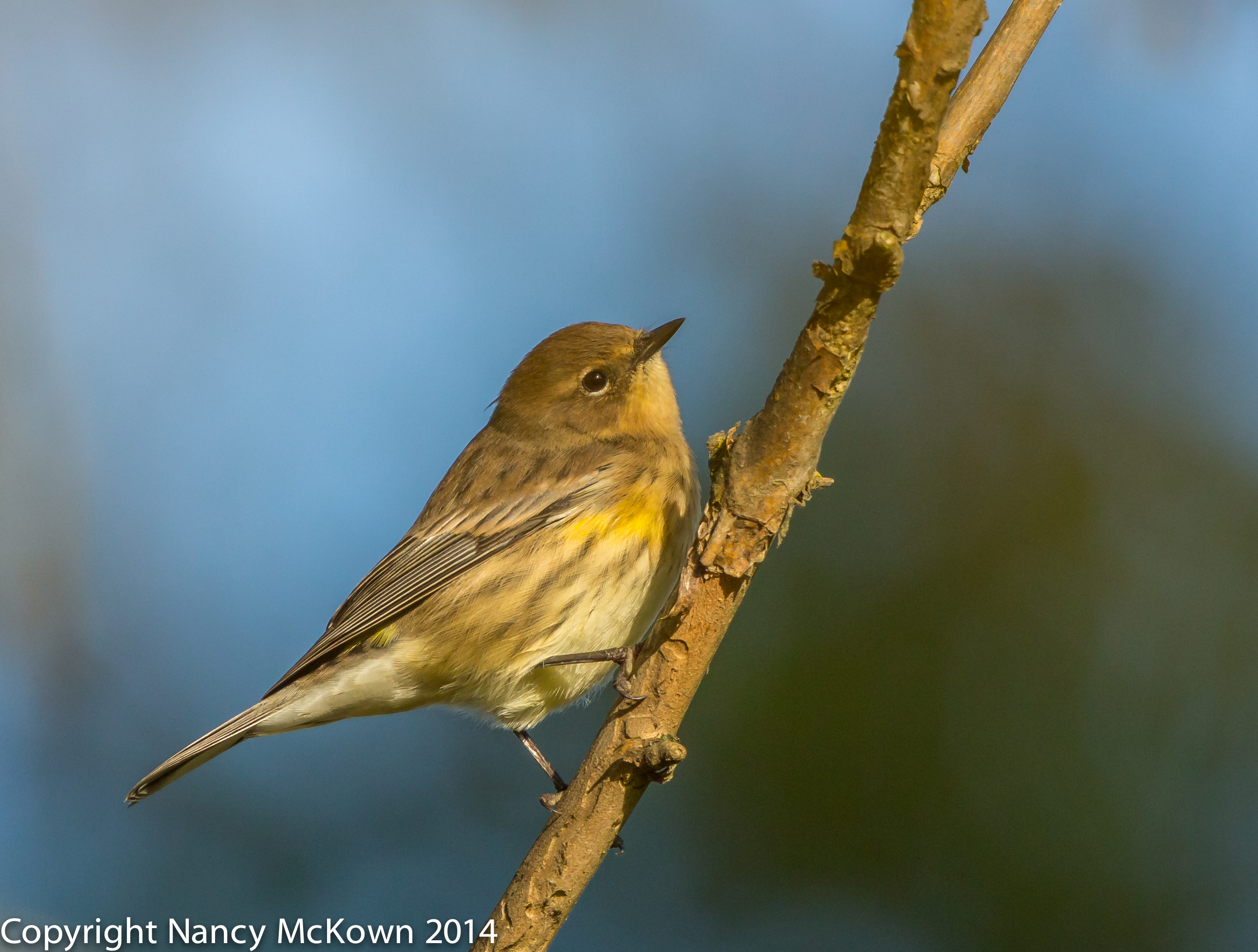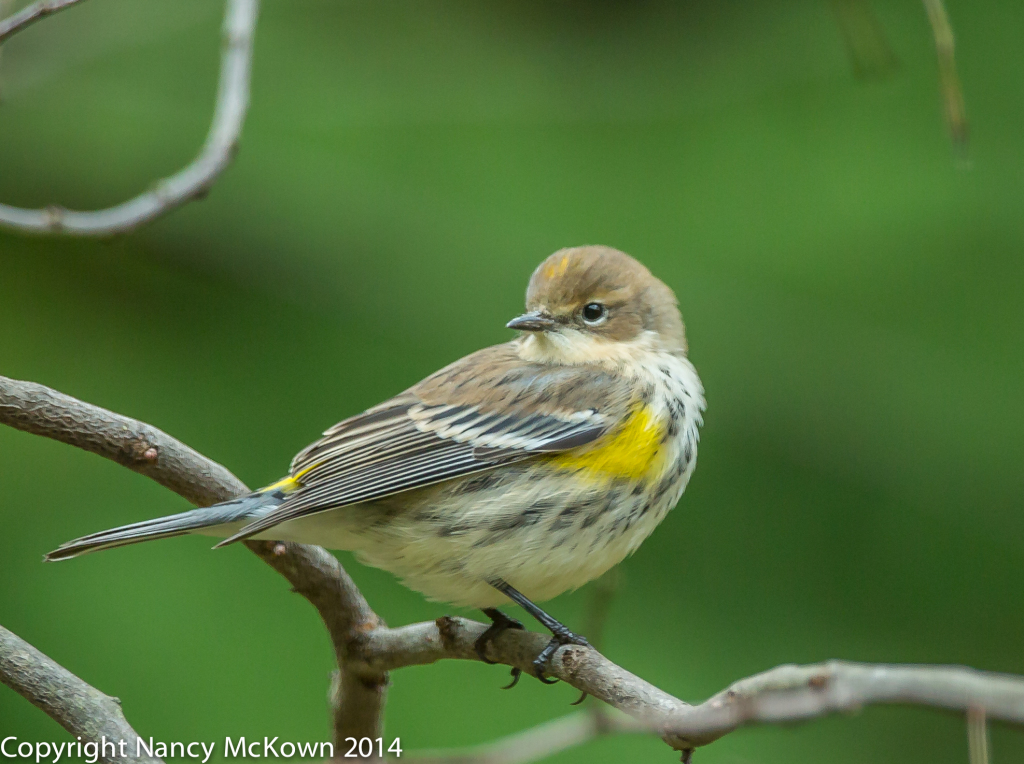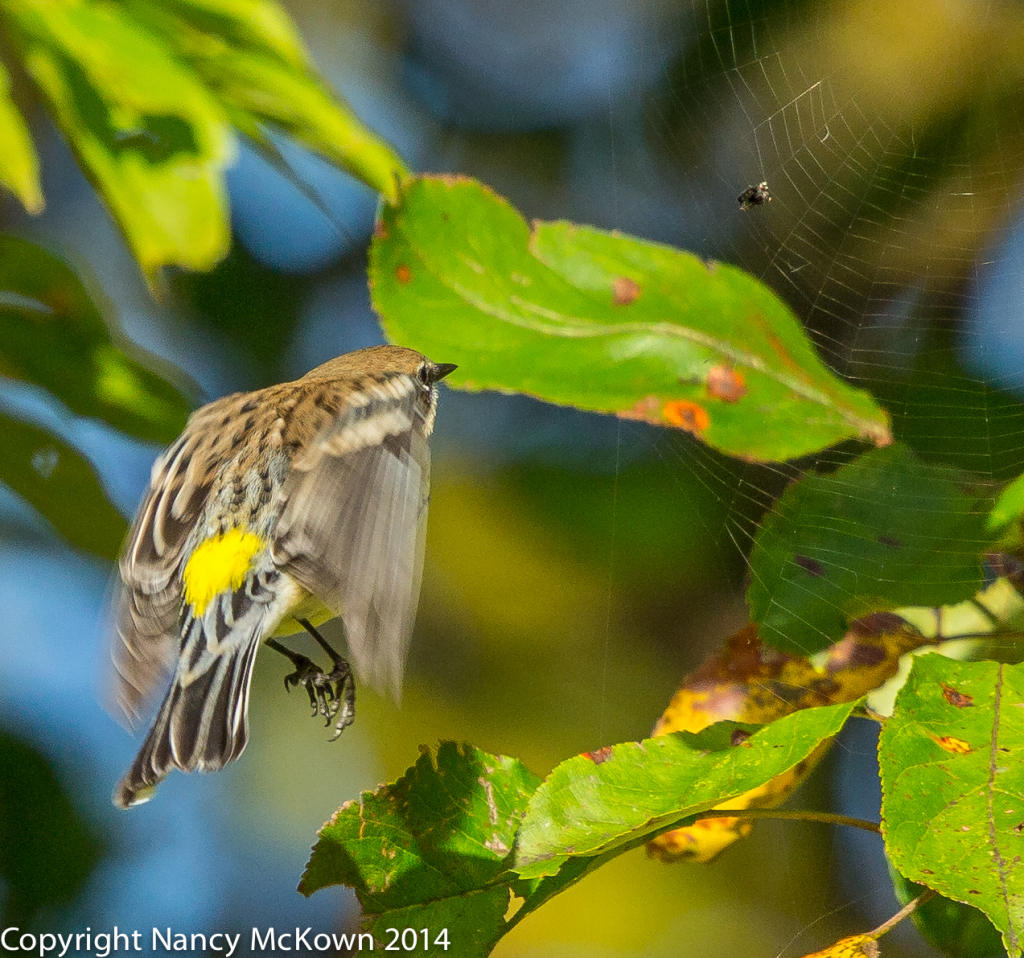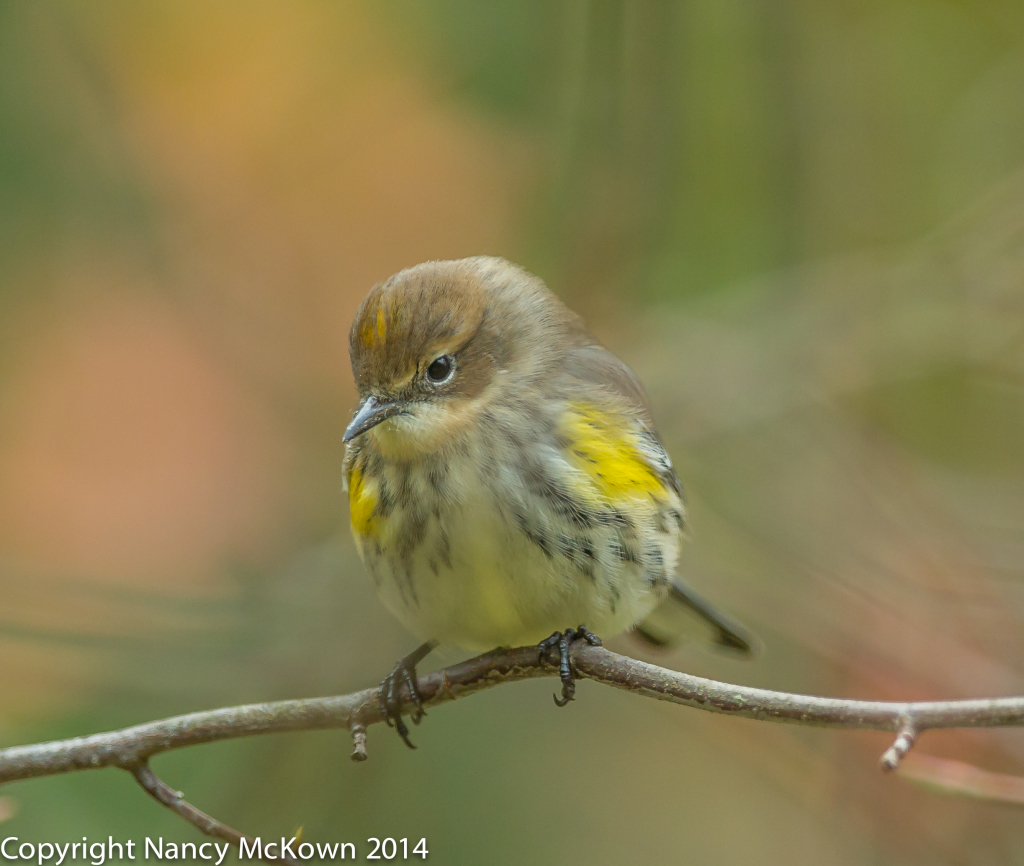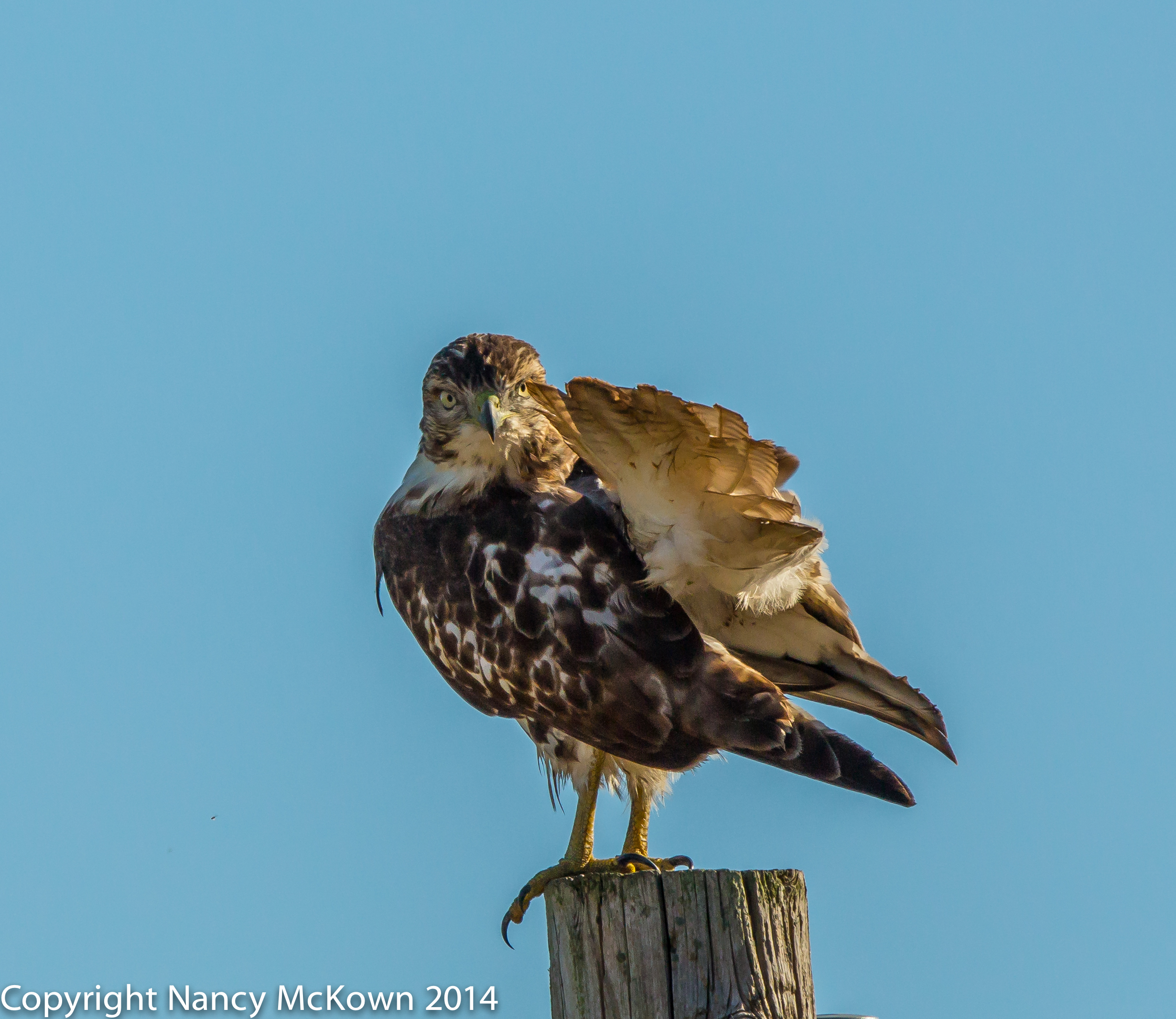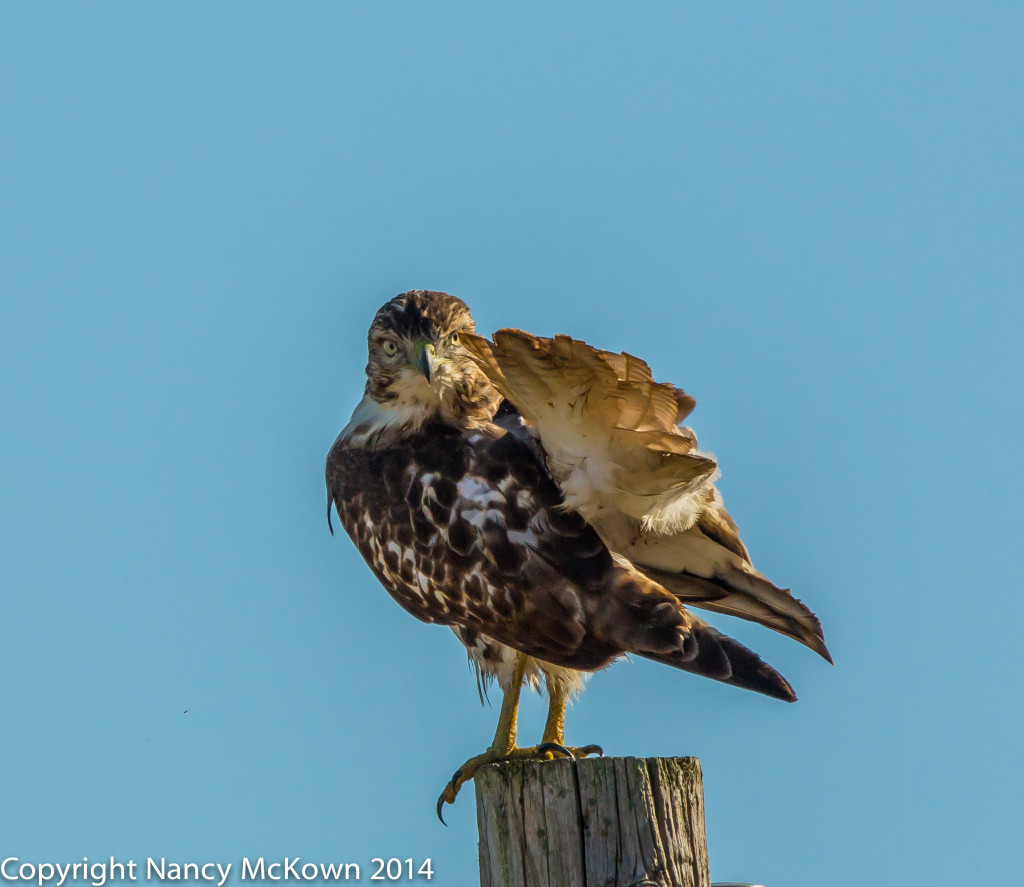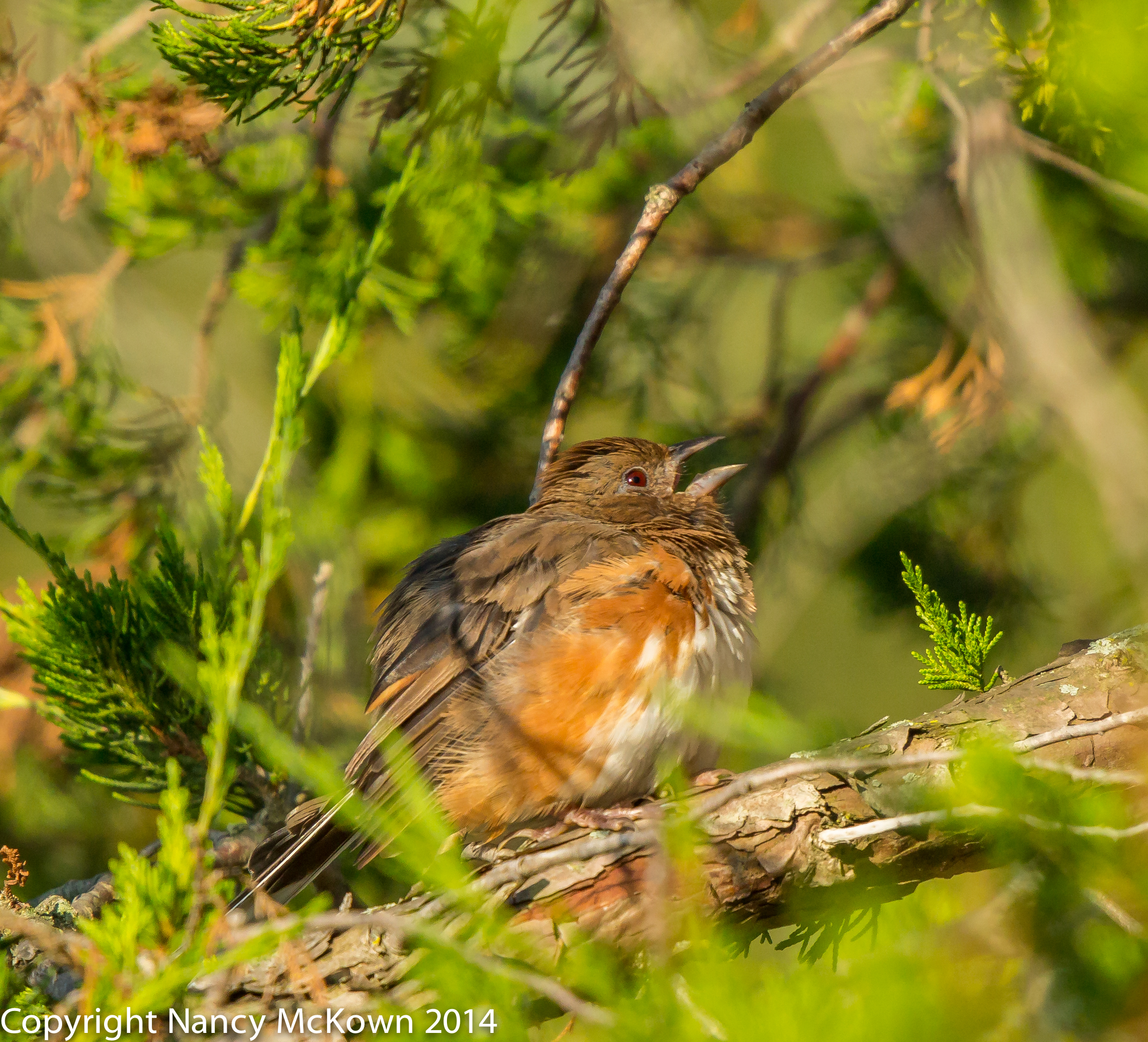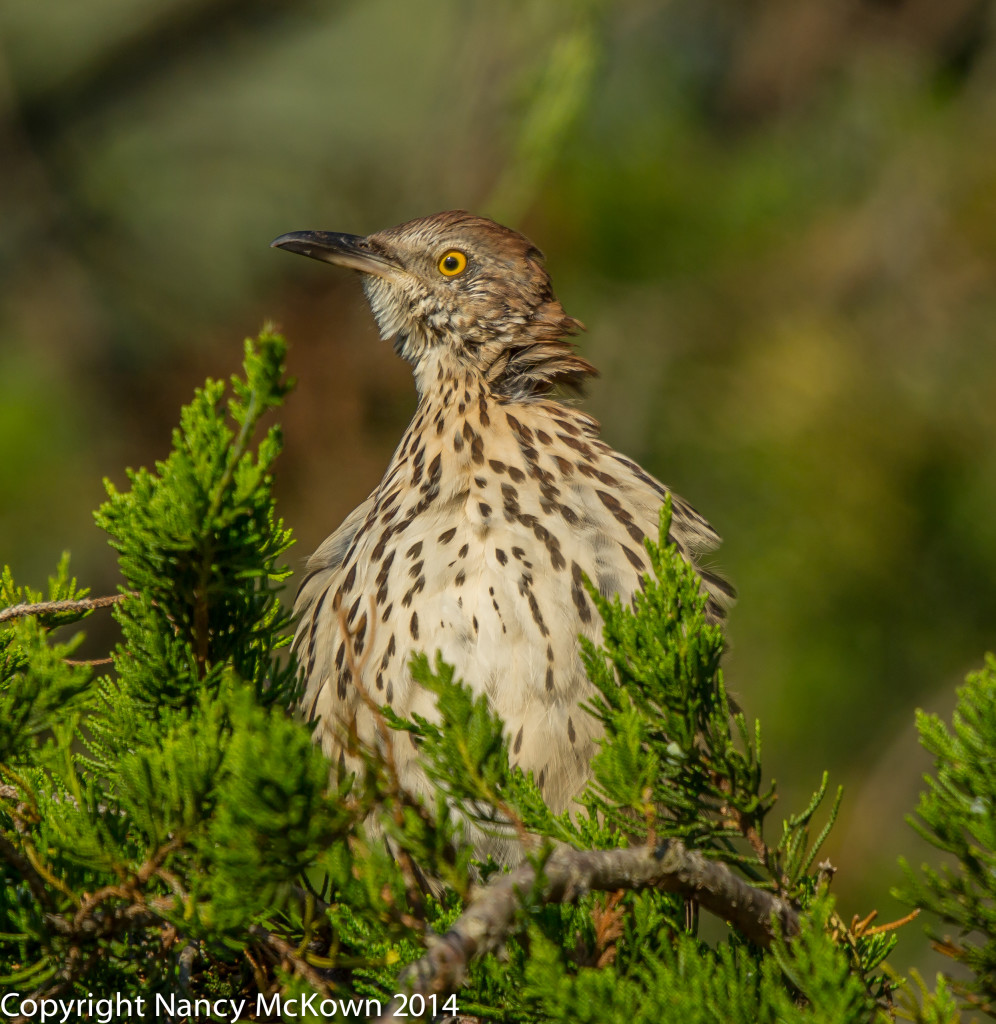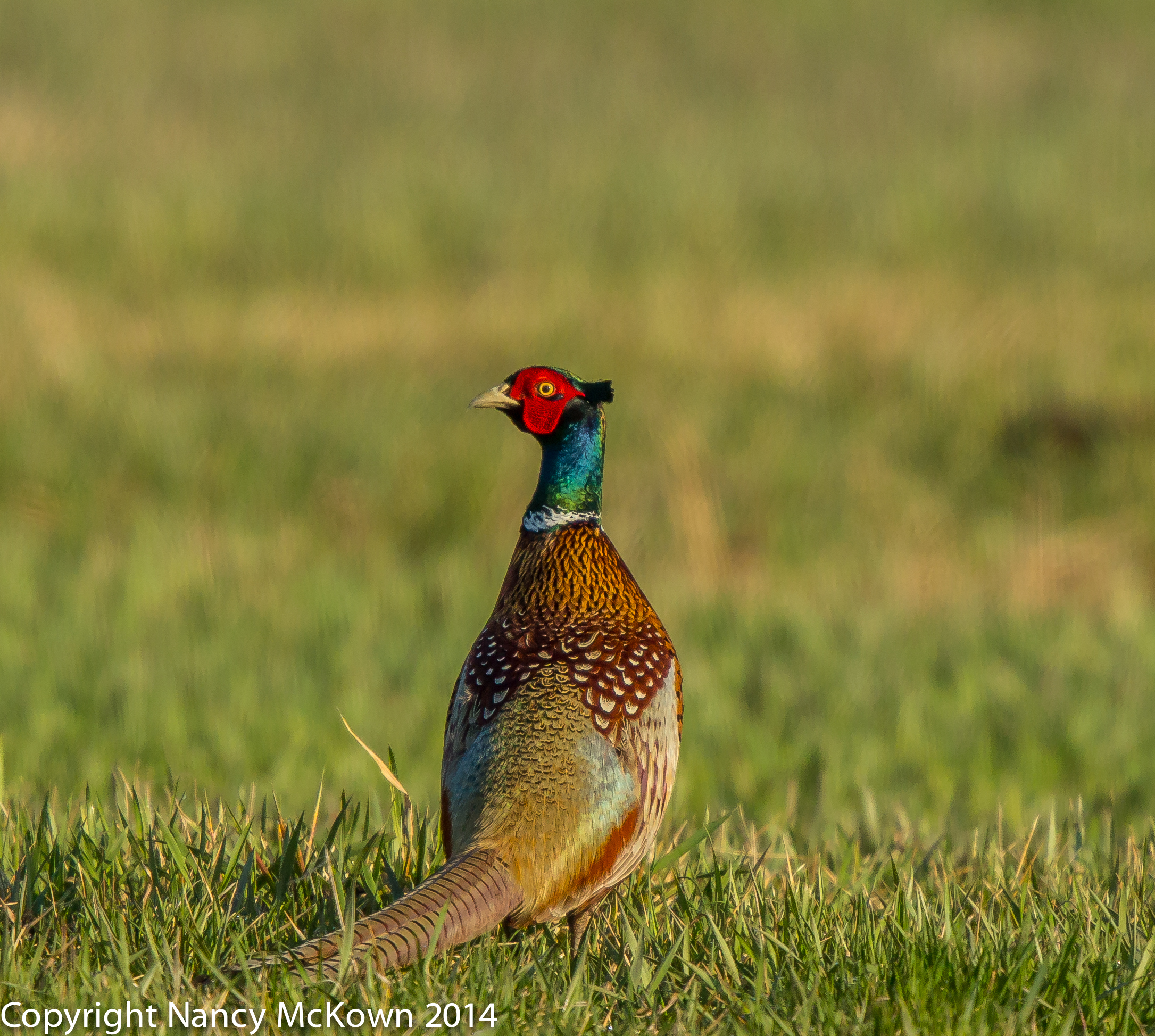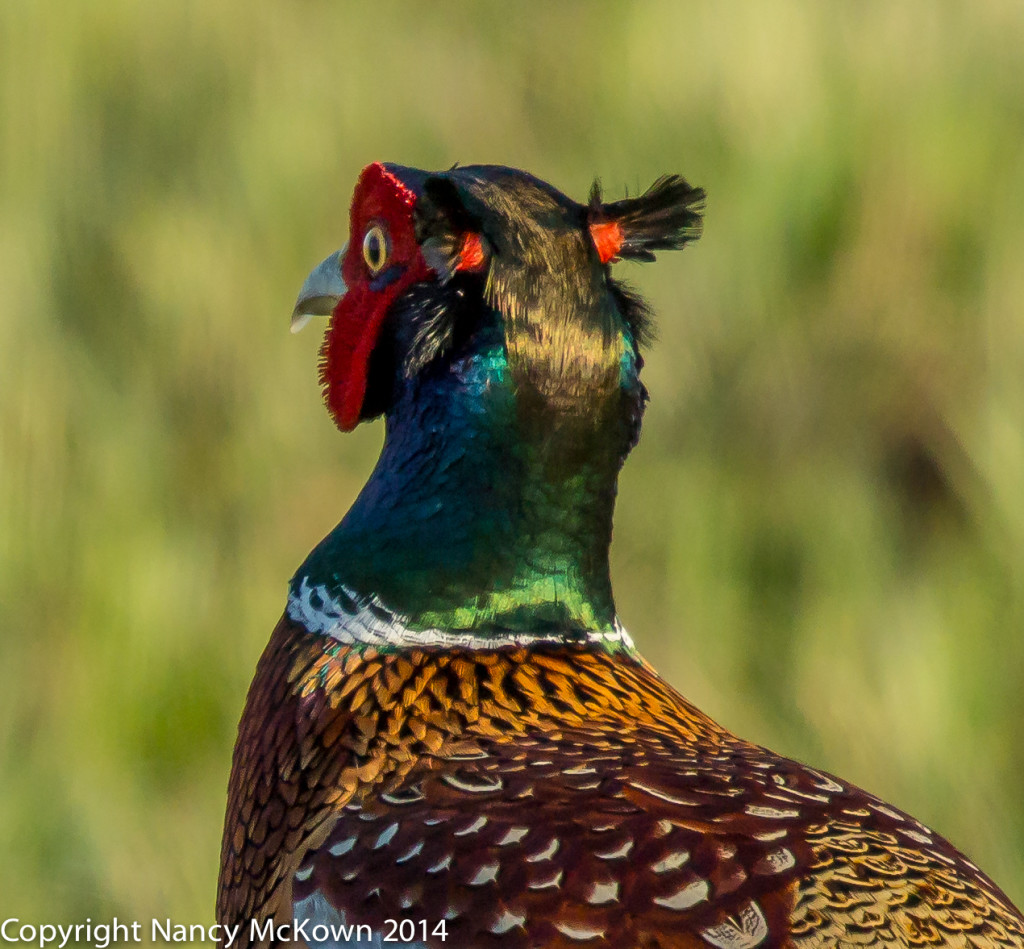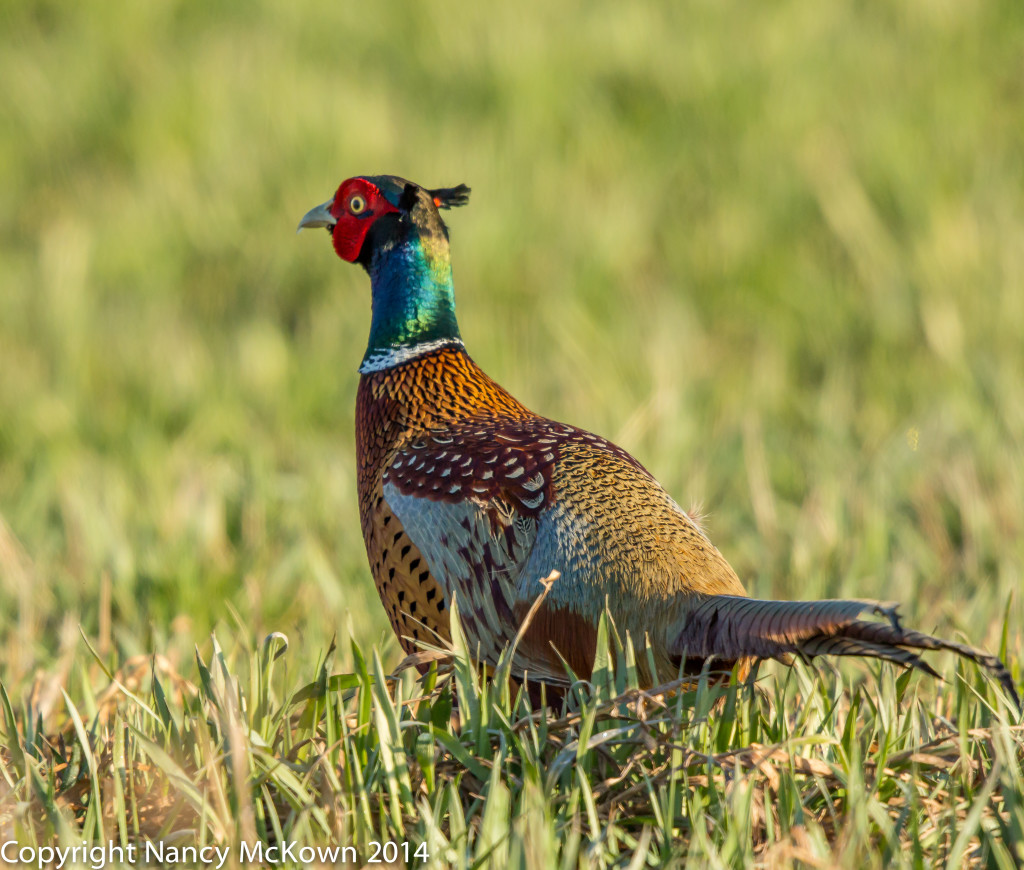Through the Glass Window Photography
Through the glass window photography?
Not recommended…. but how else can I quickly photograph these beautiful newcomers who fly in and out of our lives so quickly?
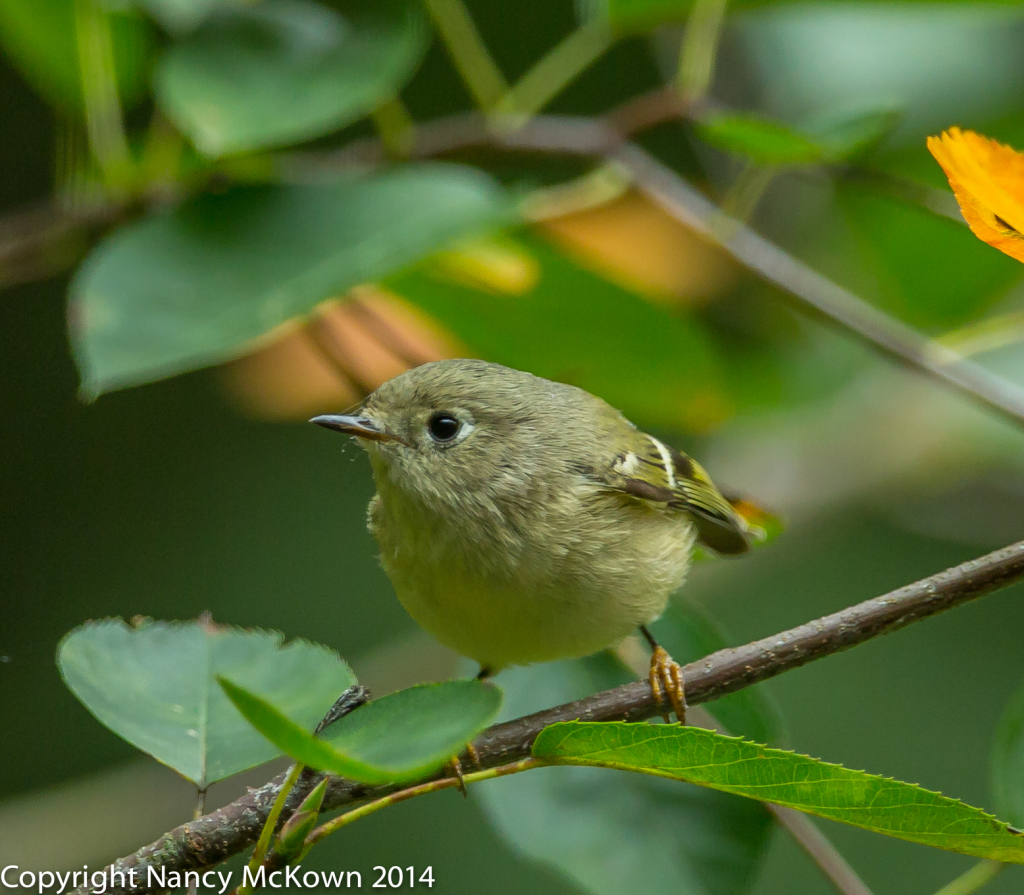
ISO 1000; f/4; 1/500 Second
Late Migrators
It was late in the fall migration cycle, but I hadn’t given up hope of seeing migrating birds in our yard. My camera and tripod were at the ready near the library window. I sat nearby with a book on my lap, lifting my head every few minutes to look out the window for birds. I noticed a branch swaying, ever so slightly, back and forth.
As my lens tracked the source of the movement, I was almost sure that I was following some species of little warbler. He appeared to have the right size, shape, and fast moving foraging behavior. And there was more than one.
With my 300mm lens plus 1.4 extender, I successfully photographed both of these warbler like birds. After uploading the photos to Lightroom, I spent a lot of time comparing them to the photos in my warbler book. No matches. I scanned both photos into the “Birdsnap” app on my phone. It returned 4 possible IDs (Wrentit, Kinglet, Vireo, and Flycatcher). NO warblers listed.
The Kinglet choice seemed to be the best match. As I always do before I publish, I uploaded my photos to WhatBird.com for definitive IDs. The experts identified them as 2 separate kinglet species – the Ruby Crowned Kinglet and the Golden Crowned Kinglet.
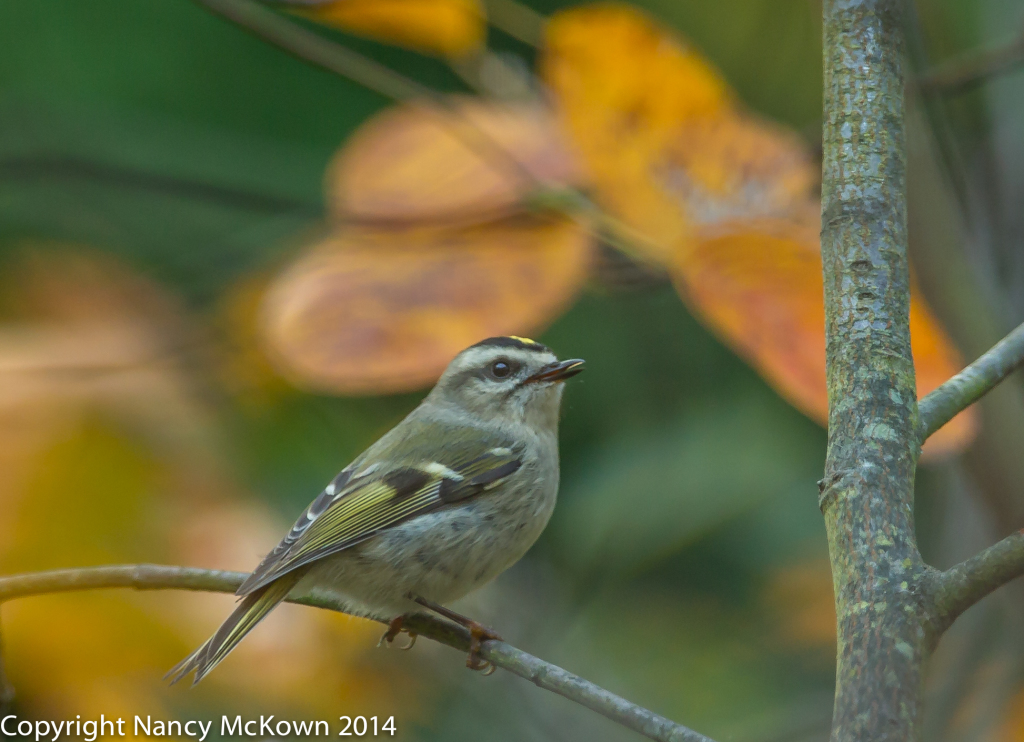
ISO 800; f/4; 1/320 Second
Photographing Two Species of Kinglets
A Kinglet is most certainly not a warbler. Plump and drab, these two species of Kinglets are some of the smallest birds in North American. They do not nest in southwest Michigan. I was very lucky to see and photograph these birds, foraging on the same day, in the same tree in my yard.
Anything Between the Lens and the Bird
Sadly, image sharpness and contrast clarity on these photos of kinglets (and other transient birds that I’ve photographed this Fall) were compromised because I was shooting through my library window.
The closeness of tree cover and eye level view that are afforded through my library windows offer a perspective that can be found no where else in my yard. Because the feeders are tucked in amongst the trees, this space also provides a level of security for the birds while they feed. Most of the time they don’t even look my way, like I’m under a cloak of invisibility.
Attaching a Filter To An Expensive Lens
A quick check of the web confirms that there is plenty of controversy about whether or not a photographer should put a piece of glass between her lens and her subject.
It is true that the use of a high quality filter on the front element of an expensive lens may avert disaster- usually caused by rough handling and dropping. These filters can also protect the lens from dirt, dust, and smearing that comes from everyday use.
But many photographers (including me) believe that it is a waste of time and money to buy high quality glass and then compromise that sharpness by placing a protective filter in front of the lens.
Not Willing to Miss the Shot
Whether it’s a window or a filter, putting any piece of glass between my lens and the bird means a loss of image quality that is significant to me.
But there are certain birds and certain circumstances that demand that I shoot fast through the glass window or miss the shot. I accept the fact that the result will be subpar photos.
Not Yet Willing to Attach A Protective Filter
There’s no “get the shot” urgency to attaching a filter to my lenses like there is when I shoot through the library window. I suppose that one day, circumstances may arise where I would consider purchasing and using protective filters on my lenses. I’m very careful with my equipment, but accidents do happen. I’m just not there yet.
To learn more about the BirdSnap app, press this link.
To view the “through the library window” photos of 2014 migrating birds, press this link.
